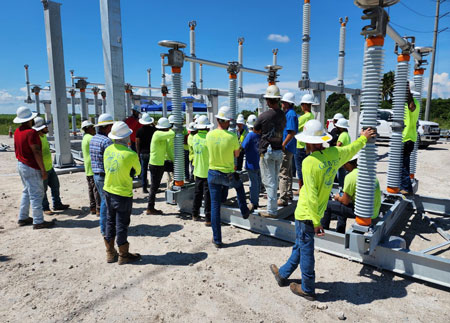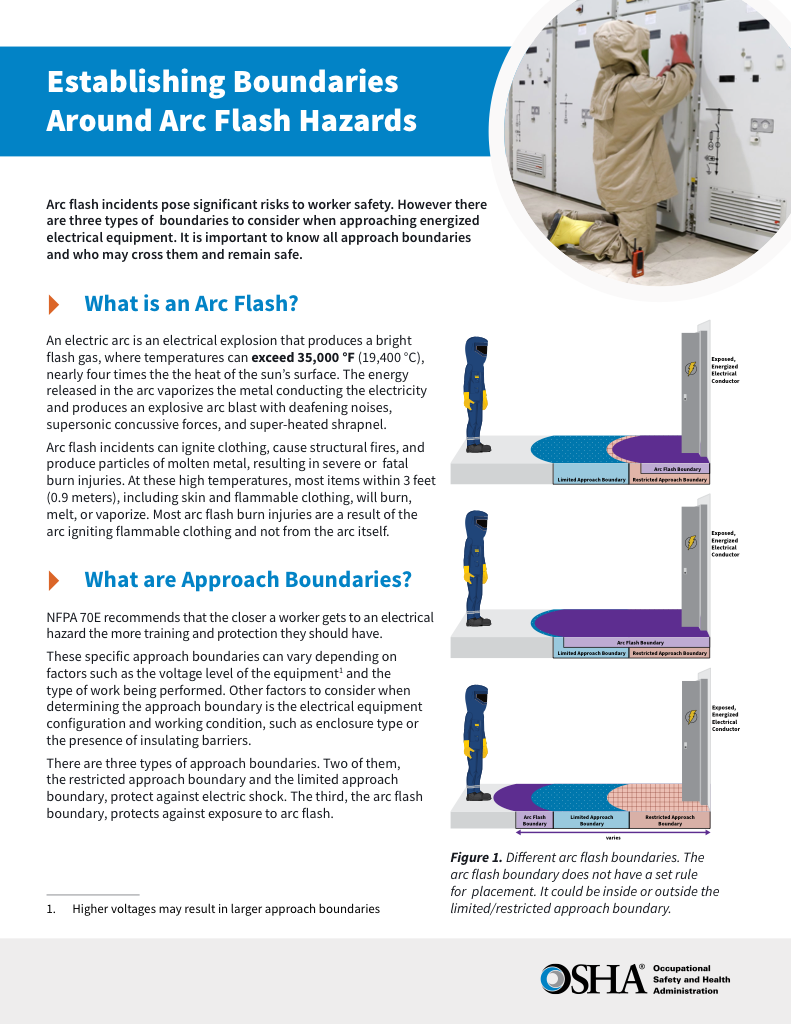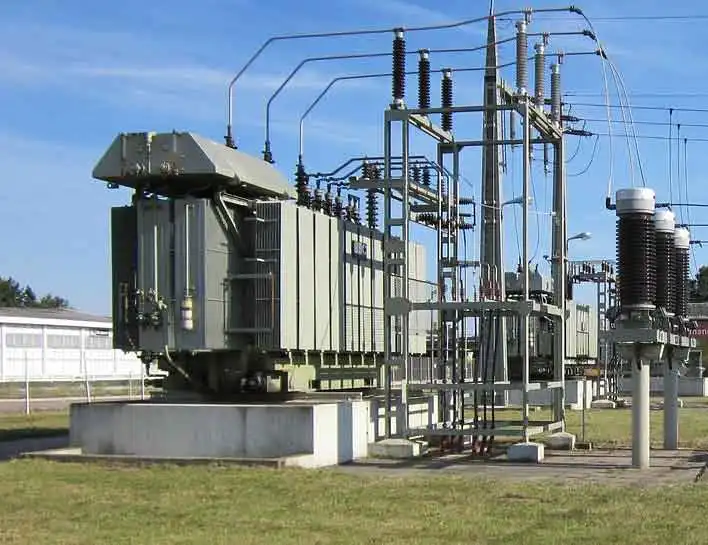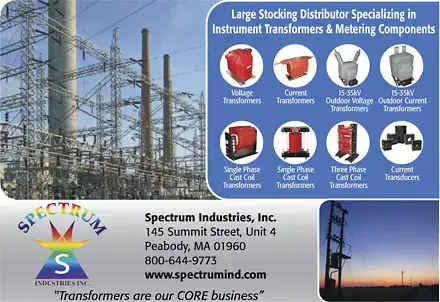Electrical Substation Training - Why Does It Matter?

Substation Relay Protection Training
Our customized live online or in‑person group training can be delivered to your staff at your location.

- Live Online
- 12 hours Instructor-led
- Group Training Available
Download Our OSHA 4474 Fact Sheet – Establishing Boundaries Around Arc Flash Hazards

- Understand the difference between arc flash and electric shock boundaries
- Learn who may cross each boundary and under what conditions
- Apply voltage-based rules for safer approach distances
Electrical Substation Training equips professionals with practical skills in design, operation, maintenance, and safety. Courses cover transformers, switchgear, grounding, and protection systems to ensure reliable power distribution and compliance with industry standards.
What Is Electrical Substation Training?
Electrical Substation Training provides specialized instruction in the design, operation, and safety of substations to ensure reliable grid performance.
✅ Enhances knowledge of transformers, breakers, and busbars
✅ Strengthens grounding, protection, and maintenance practices
✅ Improves compliance with NFPA, IEEE, and utility standards
Why It Is Essential
Stations house high-voltage equipment, including transformers, switchgear, protective relays, SCADA systems, and grounding networks. Operational errors can lead to equipment damage, service interruptions, or safety hazards. This high-voltage specialized training ensures that workers understand system interactions, fault response procedures, and how to apply standards like IEEE, NFPA, and CSA Z462.
Proper training reduces human error, improves maintenance effectiveness, and supports compliance with safety regulations governing power distribution systems. For utilities and industrial plants, it directly translates into fewer outages, longer equipment life, and lower operational costs. Our courses are designed to build practical skills, but a solid overview of what is an electrical substation is the essential primer for anyone preparing to advance their training.
Who Should Receive Electrical Substation Training?
Our high-voltage training is ideal for:
-
Field and HV technicians
-
Power maintenance workers
-
Protection and control specialists
-
Utility engineers and planners
-
Safety managers
-
SCADA and automation professionals
Whether you're just entering the utility workforce or managing an experienced substation operation team, continuous learning is vital to adapting to evolving technologies and procedures.
Key Areas Covered
Most comprehensive training programs go far beyond general training. They target the unique systems and responsibilities associated with converter stations, including:
Sign Up for Electricity Forum’s Electrical Substations Newsletter
Stay informed with our FREE Electrical Substations Newsletter — get the latest news, breakthrough technologies, and expert insights, delivered straight to your inbox.
-
Relay Protection – Understanding how relays and protective devices detect and respond to faults, coordinate with circuit breakers, and protect transformers from overload or failure.
-
Grounding and Bonding – Designing and maintaining effective grounding systems to manage fault currents, lightning strikes, and personnel safety.
-
SCADA Systems – Monitoring and controlling devices remotely through Supervisory Control and Data Acquisition platforms, including secure communication protocols.
-
Transformer Maintenance – Ensuring high-voltage transformers remain safe and efficient through condition monitoring, testing, and oil diagnostics.
-
Protection and Control – Integrating relays, IEDs, control panels, and automation systems to provide fast and accurate fault isolation.
-
Utility Technician Certification Skills – Meeting utility workforce development goals by training employees to recognized standards.
Together, these courses form a complete learning path to ensure competence across every major role.
Benefits
The main benefits of electrical substation training include:
- Improving technician competence and safety compliance
-
Reduces system downtime through effective maintenance strategies
-
Ensures compliance with utility, OSHA, NFPA, and CSA standards
-
Supports asset longevity and efficient capital planning
-
Enables the adoption of modern digital technologies and SCADA integration
-
Promotes a stronger, safer, and smarter workforce
Incorporating topics such as transformer maintenance, grounding systems, protection strategies, and SCADA systems, substation training provides real-world skills that can be applied immediately on the job.
Formats: In-Person or Live Online
Substation training can be delivered in several formats. Live online courses offer convenience, real-time instruction, and national reach, while in-person sessions allow for facility-specific learning and hands-on instruction. Customized training offers the best of both worlds, providing tailored content that aligns with company policies, unique systems, and workforce needs.
To explore the benefits of custom onsite or live online training, see our Onsite Training Benefits page or Request a Quote.
Where to Begin
If you're looking for structured, expert-led courses designed for utility professionals, The Electricity Forum Training Institute offers industry-leading options. With decades of experience, we provide:
-
Professional development hours (PDHs) and CEUs
-
Digital handbooks and course resources
-
Instructors with real-world field experience
-
Courses aligned with utility and industrial needs
- Utility workforce development improvements
We offer specialized training in areas such as:
Learn More and Register
To browse our full lineup of courses, visit the main Substation Training Course Page. Whether you're training one technician or an entire department, our programs help build safer, smarter teams ready to meet today’s challenges.








